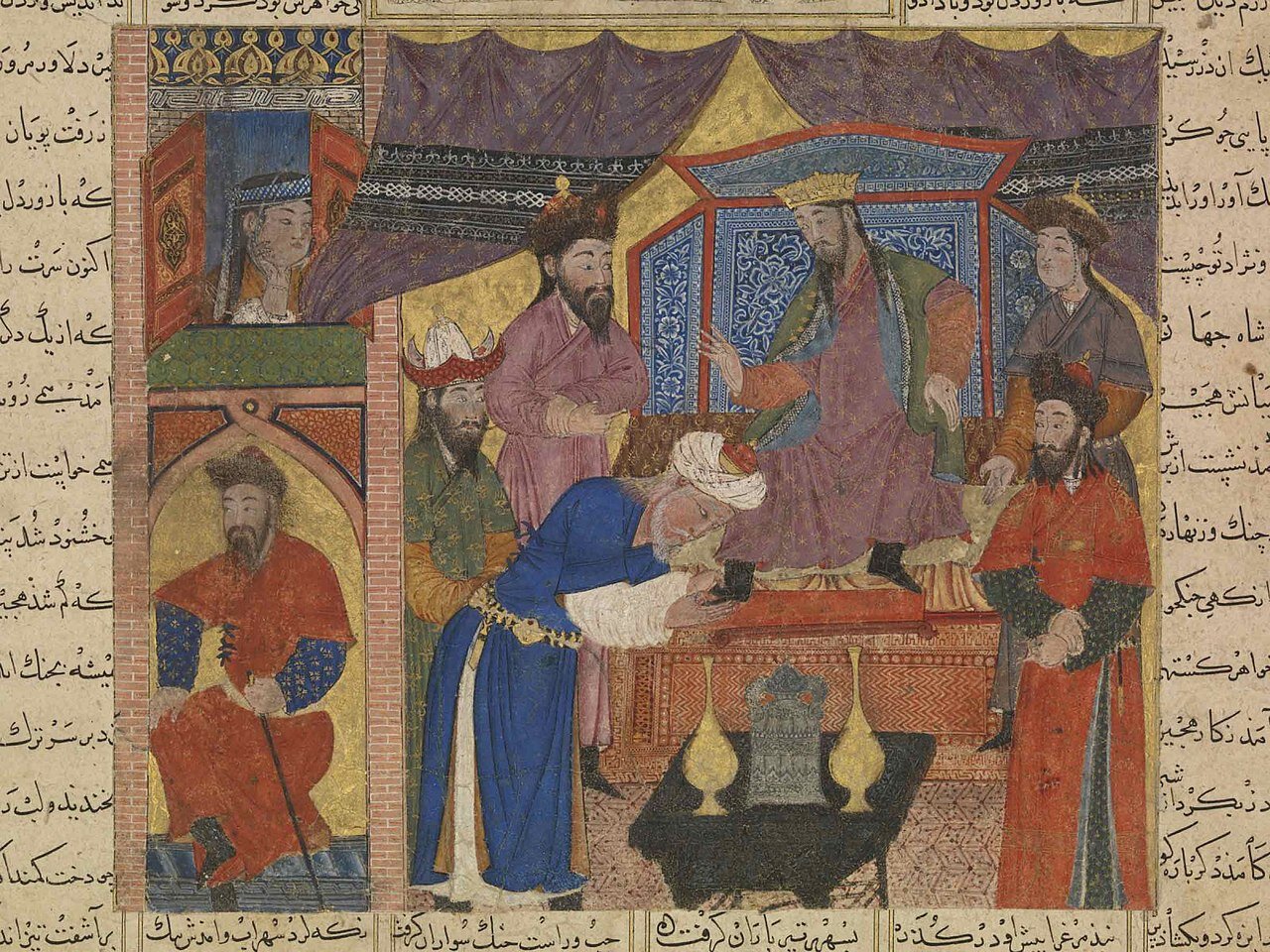Commentary book on Great Mongol Shahnameh to be unveiled in Tehran

TEHRAN - A Persian translation of a commentary book on the Great Ilkhanid Shahnameh, which is one of the oldest and most valuable illustrated manuscripts remaining from Ferdowsi’s Shahnameh, is set to be unveiled in Tehran on Tuesday.
The Great Mongol Shahnameh also known as the Demotte Shahnameh or Great Ilkhanid Shahnameh was produced in the 14th century in the context of the Il-khanid court ruling Persia as part of the Mongol Empire, about a century after their conquest.
The commentary’s author, Abolala Soudavar, and its team of translators alongside some scholars and enthusiasts of Persian art and history have been invited to attend the ceremony at the Malek National Library and Museum, Mehr reported.
Soudavar, a renowned scholar and collector, has chosen “Abu Saidi’s Shahnameh” as the title for his book, reflecting his belief that the original copy was commissioned for the Ilkhanid ruler Abu Sa'id Bahadur Khan.
The Great Ilkhanid Shahnameh is believed to be the oldest illustrated manuscript of the epic book of kings.
The newly translated work offers a detailed analysis and interpretation of the manuscript’s 72 vividly colored illustrations, providing insights into its historical background and production process. This is the first time the book has been translated into Persian, making the text accessible to a wider audience in Iran.
Soudavar’s contributions to the field of Persian art history are well recognized. His previous works include Art of the Persian Courts and The Aura of Kings: Legitimacy and Divine Sanction in Iranian Kingship, both of which have been influential in the study of Iranian artistic traditions.
The Mongol invasions of the Islamic world began in 1221 with the conquest of eastern Iran. A more devastating wave of conquest, however, came with Genghis Khan’s grandson Hulegu, when Mongol forces subjugated all of Iran and by 1258 had also taken Baghdad, thus bringing to an end the Abbasid caliphate (750–1258). Establishing rule over most of West Asia, including Iraq, Iran, Khurasan, the Caucasus, and parts of Asia Minor, Hulegu (r. 1256–65) assumed the title of “Il-Khan,” meaning lesser Khan, subordinate to the Great Khan ruling in China. This branch of the Mongol dynasty, which became known as the Ilkhanids (1256–1353), centered its power in northwest Iran.
Although Mongol conquests initially brought devastation and affected the balance of artistic production, in a short period of time, the control of most of Asia by the Mongols—the so-called Pax Mongolica—created an environment of tremendous cultural exchange. Following the conversion to Islam of Il-Khan Mahmud Ghazan (r. 1295–1304) in 1295 and the establishment of his active cultural policy in support of his new religion, Islamic art flourished once again. East Asian elements absorbed into the existing Perso-Islamic repertoire created a new artistic vocabulary, one that was emulated from Anatolia to India, profoundly affecting artistic production.
During the Ilkhanid period, the decorative arts—textiles, pottery, metalwork, jewelry, and manuscript illumination and illustration—further developed along established lines. The arts of the book, however, including illuminated and illustrated manuscripts of religious and secular texts, became a major focus of artistic production.
AM
